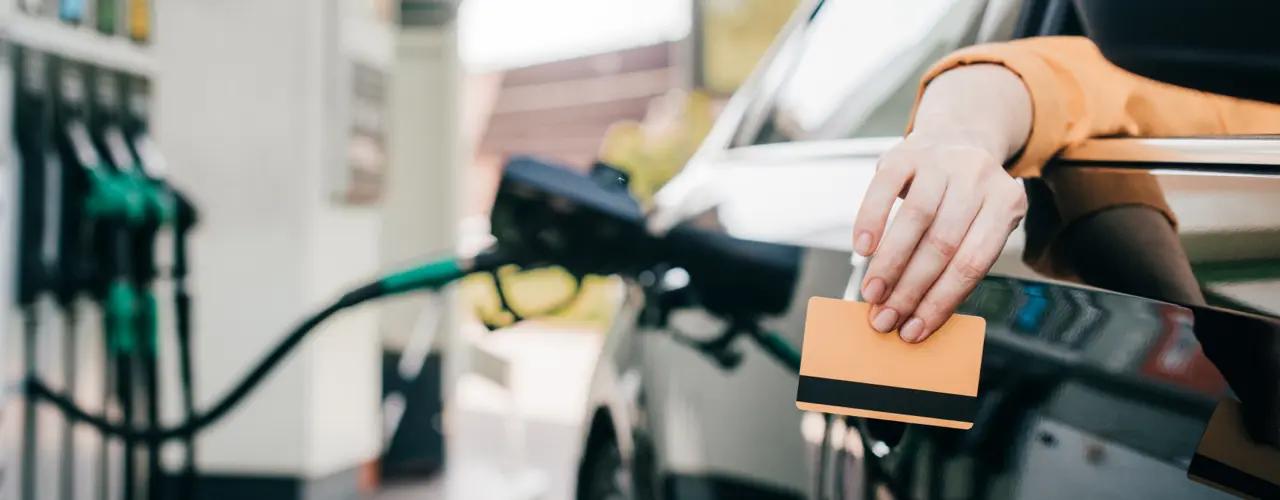
Fuel consumption in the vehicle fleet
17. Nov 2022
The development of fuel prices is a burning issue for every fleet manager. What options are there for saving fuel through sensible fleet management? That's what this blog aims to clarify
Driving training
Acceleration processes consume a lot of gasoline, and studies show the dramatic differences in gasoline consumption between stopped (congested) and rolling traffic Driving training includes, among others:
- Driving with foresight. The driver tries to recognize all obstacles and dangers at an early stage.
- Keeping your distance gives you room to maneuver. With sufficient distance, you can use the engine brake efficiently.
- Driving without emotion: furious overtaking maneuvers cost nerves, fuel and money
- The first gear is reserved for starting off, driving at low revs saves fuel
- Before the red light, release the gas but do not take out the gear. in. The feed pump is set to zero, the car runs at the excess speed.
- Switch off cruise control. Cruise control maintains speed regardless of the road - uphill and downhill. It makes more sense to use the topography of the road.
- Set and maintain their own speed limits on highways. Constant speeds significantly reduce fuel consumption.
Optimizing vehicles
The tires, tire pressure or rolling resistance offer many opportunities for savings.
For trucks tire pressure monitoring systems are not required by law. They can be beneficial. Incorrect tire pressure increases fuel consumption. What happens if the pressure is too low? The tire bulges, rolling resistance increases. The tire rests with less surface area, but it is rolled more. More energy is needed to move the vehicle.
When overinflated, the tire bulges like a balloon and rests on the road only in the middle. This reduces rolling resistance and fuel consumption, but tire wear increases, braking distance becomes longer, and the tire is more susceptible to punctures.
For tires the rolling resistance plays a role too. The lower it is, the further the distance you can cover on one tank of fuel. Rolling resistance depends on several factors: the construction of the sidewall and the tread, the tread compound and the tread depth.
Special tires have specially developed tread compounds with low heat generation, high elasticity and low energy loss. They consume less fuel.


Telematics
Clearly prepared and structured data reveal the fuel consumption.
A Telematics system reads data from the vehicle and sends it to the company. Speed, current fuel consumption, engine speed or tire pressure - among other things - are measured automatically.
Telematics helps save fuel because the driver's entire driving behavior is recorded and evaluated. Gentle driving styles can be perfected.


Intelligent refueling and route planning safe fuel
Planning
There is already special software that should help, based on numerous data, the Fueling behavior numerous data coming from the vehicle are combined with traffic data, weather data, or routes driven. The programs provide a complete overview of fuel consumption, refueling costs, and driving behavior.
The right tour planning is another component to save gasoline, which includes:
- Completeness (utilization of volume and/or payload)
- Avoid unnecessary mileage or time
- Shortest route or optimized route (depending on traffic situation)
- Suitable vehicle (configuration and size, possible customer restrictions)
- The driver can, for example, take a small detour to unload most of the load and then - much more easily and economically - make the rest of the trip.
Diversification of the vehicle fleet
Digitalization supports planning for the switch to electric mobility.
No measure will save more fuel than switching to E-cars whether the fleet manager is diversifying the fleet or converting it altogether, the process involves numerous questions.
Here, too, there is already digital support. A university in Germany has developed a corresponding program that records fleet data and thus determines the movement patterns of the conventional vehicle fleet. Which vehicles are used, when and how, which routes are driven, etc.
Then, the simulation of the movement patterns as an e-vehicle fleet is performed, allowing for a well-founded justification of which vehicles can be replaced by e-vehicles.
If, for example, routes over 300 km are driven regularly, e-cars are not (yet) the first choice. A craftsman's car will obviously not be replaced by a Tesla. In the truck sector, too, there is often no electric alternative. However, studies show that cars are often only used for short distances of no more than 20 km. Many fleets can already switch to e-cars today - without any negative consequences.
The fleet manager receives recommendations on the required charging infrastructure, because this point determines the success of a conversion. What are the actual ranges of the cars (they are shorter in winter!). What charging infrastructure is required? How many cars need to be charged at the same time, can charging be done at night? Can the cars be connected to a charging station during the day (during the customer appointment)? In this way, the fleet manager can successfully integrate e-vehicles into the fleet.


Conclusion
Economical fuel consumption is extremely important for successful fleet management. Firstly, for cost reasons and secondly, to reduce CO2 emissions. Digitization can be very helpful in optimizing the fleet. The fleet management system fleetster provides extensive data clearly presented: on the driver's driving behavior, the consumption of the cars or the utilization of the fleet. But fleetster also supports optimal route planning or the conversion to e-cars.